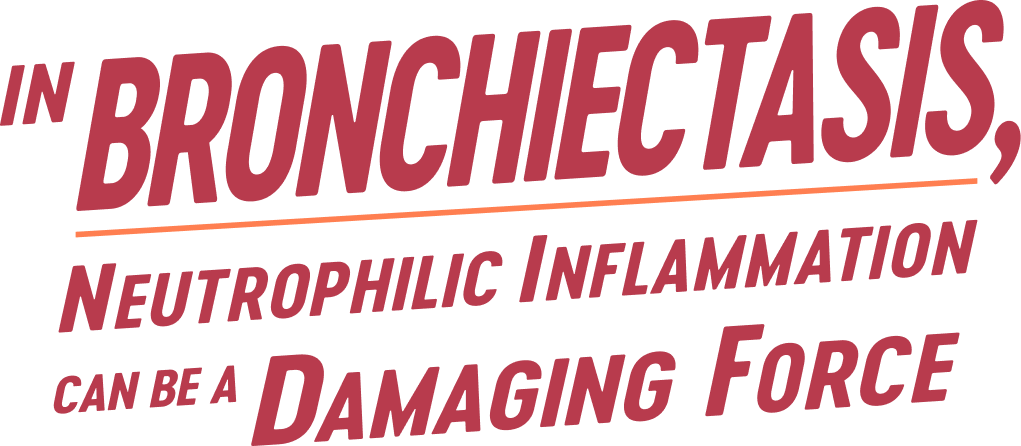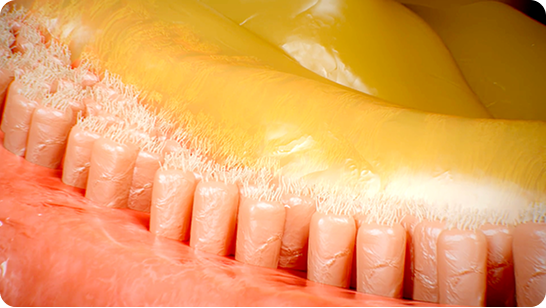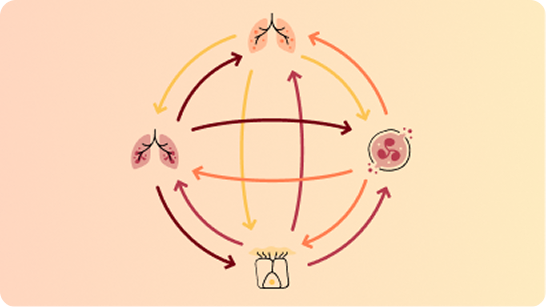

Neutrophils and neutrophil serine proteases (NSPs) help protect the lungs but can contribute to neutrophilic inflammation in bronchiectasis.1–5
This can lead to severe consequences, including disease progression, lung destruction and exacerbations.1,2,5,6

What is bronchiectasis?
Bronchiectasis is a chronic condition with unpredictable exacerbations and varied symptoms.

Impact of exacerbations
Exacerbations significantly increase mortality risk and affect long-term patient outcomes.

Vicious vortex
Bronchiectasis progresses through a cycle of infection, inflammation, impaired clearance and lung damage.

Neutrophilic inflammation
Neutrophils drive chronic inflammation in bronchiectasis, worsening disease severity over time.




